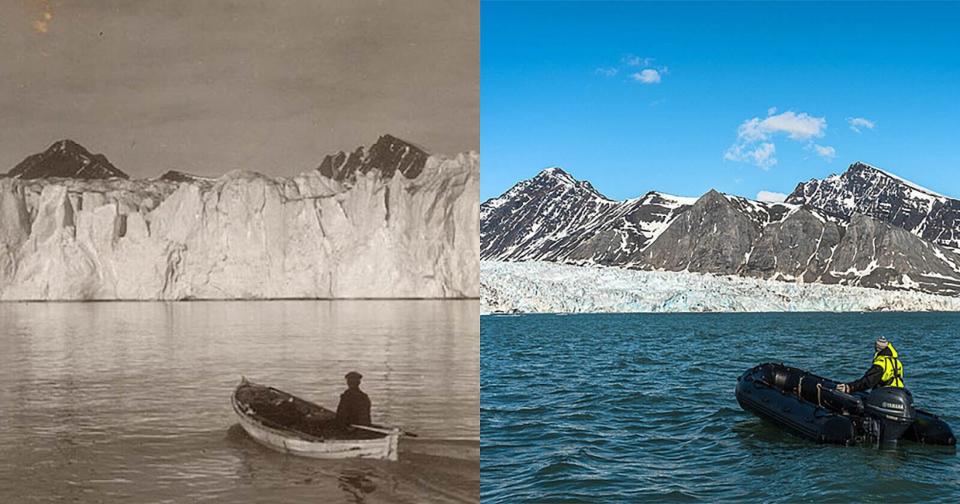Ice loss in the Arctic has long been a sign of climate change, but an Arctic entirely free of ice has still seemed a long way off.
Not so, according to a recent study, which found that the Arctic could see its first ice-free day before the end of the decade.
The term “ice-free” is approximate since small patches of ice will cling to Greenland and the northern edges of Canada long after the rest of the Arctic has melted. Researchers measure the amount of frozen Arctic in “sea ice extent,” meaning areas with at least 15 percent of sea ice concentration. The Arctic is considered ice-free when there are less than one million square kilometers of sea ice.
Advertisement
Advertisement
It is hard to predict when exactly this will happen. Models consistently underestimate ice loss, and global weather patterns affect conditions at the Poles. But this most recent study found it could be as early as 2027.

This well-known pair of photographs compares the same scene from 1918 and 2003. Photo: Neill Drake
A powerful symbol
Combining 11 different climate models, researchers Celine Heuze and Alexandra Jahn examined over 300 scenarios for the future of ice in the Arctic. Nearly one-tenth of them showed the first ice-free day occurring within the next 10 years, with the earliest prediction only a few years away. Even conservative models estimate the Arctic will be free of ice within 30 years.
“”The first ice-free day in the Arctic won’t change things dramatically,” Jahn said, but it would be a powerful symbol of our ability to affect the planet.
Ice loss in general, however, will have very dramatic effects. Due to the albedo effect, by which dark water in the Arctic absorbs the sun’s rays, the warming sea will accelerate climate change. It will also cause more extreme weather events.

This chart shows the nine most drastic scenarios generated by models. SIA stands for ‘Sea Ice Area.’
Advertisement
Advertisement
The first ice-free day, the models show, won’t just come from a warm summer but a warm winter and fall as well. If ice levels reach a low point during winter, climate scientists will know an ice-free day will likely follow the next summer. It won’t be a single day, either. Models suggest the first ice-free period will last between 11 and 53 days.
Is it preventable?
There were also scenarios where things went better for the ice. Changes in emissions can slow down melting, preventing an ice-free day within the 21st century. However, conditions in the Arctic vary wildly from year to year, and especially cold or warm years are difficult to predict, as a number of explorers discovered to their dismay.
According to researchers, the good news is that “if we could keep warming below the Paris Agreement target of 1.5 °C of global warming, ice-free days could potentially still be avoided.”
EMEA Tribune is not involved in this news article, it is taken from our partners and or from the News Agencies. Copyright and Credit go to the News Agencies, email news@emeatribune.com Follow our WhatsApp verified Channel



